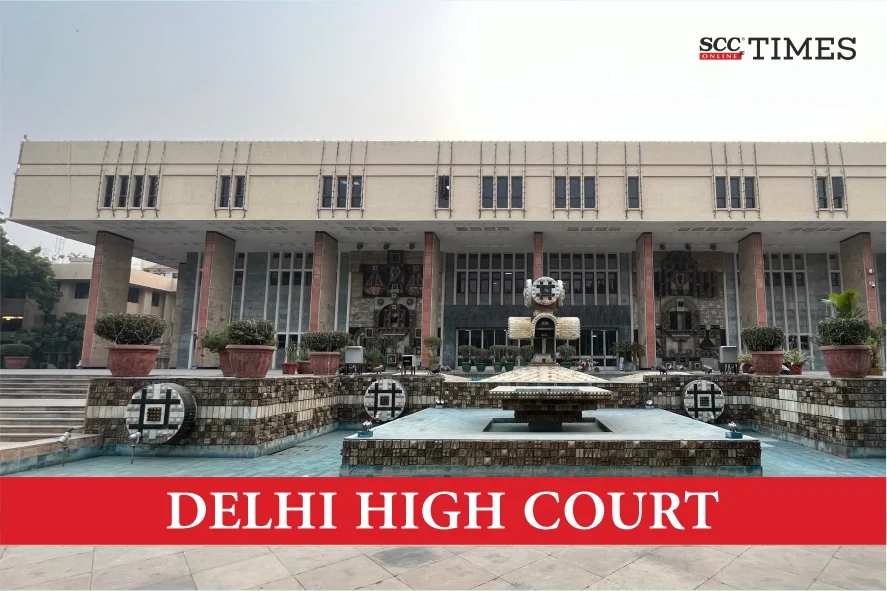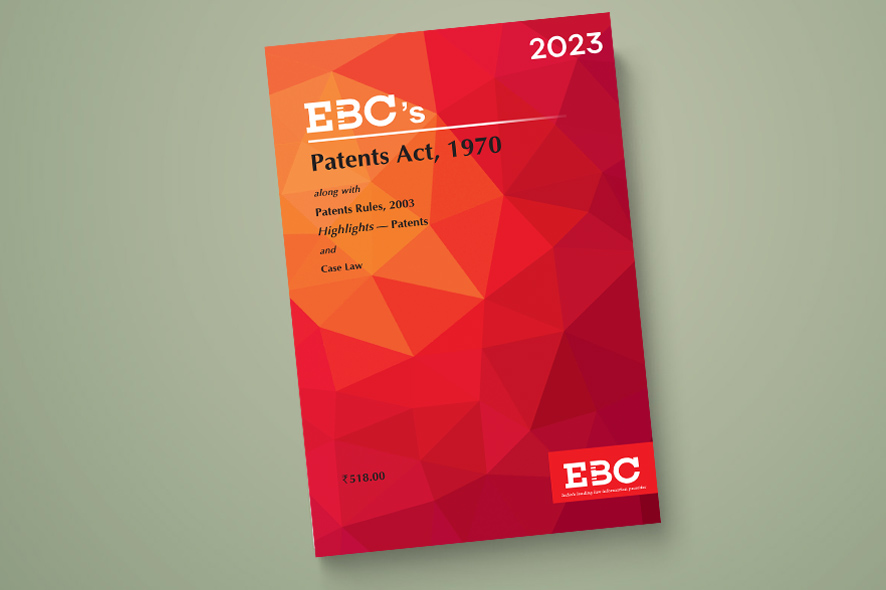Delhi High Court: In the present case, a cross-suit was filed, wherein plaintiff, Lava International Ltd. (‘Lava’) alleged that the suit patents were neither valid in terms of the Patents Act, 1970 (‘the Act’) nor essential, rendering them unenforceable; and respondent, Telefonaktiebolaget LM Ericsson (‘Ericsson’) alleged that Lava was infringing its Standard Essential Patents (‘SEPs’). Amit Bansal, J.*, held that Lava was liable to pay Rs 244,07,63,990 as damages, along with interest at 5% p.a., to Ericsson for infringement of its SEPs. The Court further held that the first suit patent asserted by Ericsson, i.e., IN 203034, was invalid and liable to be revoked both on grounds of non-patentable subject matter and lack of novelty. The remaining seven suit patents, i.e., IN 203036, IN 234157, IN 203686, IN 213723, IN 229632, IN 240471 and IN 241747 were held to be valid, after examination on merits in respect of subject matter eligibility, novelty and inventive step.
Background
Ericsson was engaged in designing and manufacturing telecommunications equipment, setting up telecommunication networks and driving innovation in the field of telecommunications, data communications and mobile networks. Ericsson claimed to have a global portfolio of patents, many which were SEPs, that are also used in implementation of various standards set by the European Telecommunication Standards Institute (‘ETSI’) and other Standard Setting Organizations (‘SSOs’). Ericsson’s business involved licensing those patents to companies manufacturing and selling telecommunications equipment such as mobile phones and infrastructure.
Lava was an Indian company, which was engaged in the business of selling mobile phones, dongles, storage devices and tablets. Ericsson filed a suit against Lava alleging infringement of its eight SEPs relating to the following technology areas:
-
Adaptive Multi-Rate (‘AMR’) speech codec – Codec that conserved use of bandwidth and enhanced speech quality (AMR). AMR was used mandatorily in 3G enabled phones and at the option of an implementer/manufacturer in 2G enabled phones.
-
Enhanced Data Rates for GSM Evolution (‘EDGE’) – A transceiving unit for block automatic retransmission request (EDGE). EDGE was used in 2G standard compliant devices at the option of an implementer.
-
Features in 3G – Multi service handling by a single mobile station and a mobile radio for use in a mobile radio communication system (3G).
Ericsson submitted that it offered to license its SEPs to Lava on fair, reasonable, and non-discriminatory (‘FRAND’) terms and requested Lava to enter into negotiations and discussions for obtaining license. However, despite Ericsson’s request to execute a FRAND license, Lava continued with its activities in India and failed to obtain any license from Ericsson on FRAND terms qua Ericsson’s portfolio of SEPs.
Analysis, Law, and Decision
The Court acknowledged the transformative impact of the evolution of mobile telecommunications in India, which had opened access to information and digital services, leading to a more connected and digitally empowered society. The Court opined that this progress was supported by implementation of standards by SSOs, which had facilitated the seamless integration of new technologies and the universal adoption of new technology in mobile technology.
The issues for consideration before this Court were as follows:
1. Whether Ericsson was the owner of the suit patents and whether the counter claim filed by Lava was barred?
The Court noted that Ericsson had filed certified copies of the Patent Certificates in respect of all the suit patents issued by the Office of the Controller General of Patents, Designs and Trade Marks (‘Indian Patents Office’) and the same were not denied by Lava. Thus, the Court held that Ericsson had filed sufficient material to establish its ownership of the suit patents. Further, the Court stated that in view of the unambiguous language of Section 64 read with Section 104 of the Act, it could not be said that the counter claim filed on behalf of Lava was barred. Further, no time limit was prescribed for filing a counter claim in the Act. Thus, in the present case, Lava had duly filed its counter claim along with its written statement seeking revocation of the suit patents granted in favour of Ericsson.
2. Whether the suit patents were invalid in nature and were liable to be revoked considering the grounds raised by Lava in its counter claim?
Lava challenged the validity of the suit patents on the following grounds:
2.1. The inventions claimed by Ericsson in the suit patents were mere algorithms
The Court opined that the inventions that were solely directed towards algorithms, mathematical methods, business methods or were computer programmes per se, would not satisfy the test of patentability and would consequently, not be inventions. However, an invention that merely incorporated algorithms, sets of instructions, mathematical or business methods within a method or system, and satisfied all the criteria for patentability, was not inherently non-patentable. The Court further opined that an invention should not be deemed a ‘computer programme per se’ merely because it incorporated algorithms and computer-executable instructions. Further, if the subject matter was implemented on a general-purpose computer, but resulted in a further technical effect that improved the computer system’s functionality and effectiveness, the claimed invention could not be rejected as non-patentable for being a ‘computer programme per se’. Thus, the Court held that refusing such inventions as non-patentable would be against the legislative mandate.
2.2. The inventions claimed in the suit patents were not novel and did not involve any inventive step
The Court relied on a ‘Seven Stambhas Approach’ as a guidance for determination of novelty and stated that the said approach acknowledged that novelty encompassed not just explicit novelty but also implicit novelty within a text. This approach aimed to provide a structured framework for assessing novelty, ensuring a clear distinction between novelty and non-obviousness. In the evaluation of the inventive step, the Court considered the various established tests like the ‘Obvious to try’ approach, ‘Problem/solution’ approach, the ‘Could-Would’ Approach, and the ‘Teaching Suggestion Motivation’ (TSM) test.
2.3. The specifications of the suit patents did not sufficiently/fairly describe the invention or the best method by which the claimed invention was to be performed/implemented
The Court, after considering the patent claims of Ericsson along with the complete specifications, opined that it fairly and sufficiently described the invention to enable the person skilled in the art to work on the invention. The Court did not find any merit in the objection taken by Lava and thus held that the ground for revocation taken by Lava under Sections 64(1)(h) and 64(1)(i) of the Act was devoid of merits.
2.4. The suit patents were obtained by making misrepresentations to the Patent Office
The Court opined that the threshold for proving such allegations was understandably high, requiring clear and convincing evidence of intentional wrongdoing. Thus, mere allegations were not sufficient to revoke a patent; there must be a clear demonstration of intentional deceit. Therefore, given the lack of concrete evidence from Lava to support its contentions for revocation of the patents under Sections 64(1)(j) and 64(1)(m) of the Act, the said claim was found to be unsubstantiated and was therefore rejected.
Validity of the suit patents
The Court held that the first suit patent asserted by Ericsson, i.e., IN 203034, was invalid and liable to be revoked both on grounds of non-patentable subject matter and lack of novelty. The remaining seven suit patents, i.e., IN 203036, IN 234157, IN 203686, IN 213723, IN 229632, IN 240471 and IN 241747 were held to be valid, after examination on merits in respect of subject matter eligibility, novelty and inventive step. Thus, the counter claim filed on behalf of Lava was allowed to limited extent of revocation of the suit patent, IN 203034 titled as ‘Linear Predictive Analysis by Synthesis Encoding Method and Encoder’.
The Court on the issue of infringement of SEPs opined that the application of the two-step test for establishing infringement of SEPs involved mapping the suit patents to the standards and showing that the implementer’s device also maps to the standard. Consequently, on account of compliance of Lava’s devices with the standards, infringement of the suit patents was held to be an inevitable outcome. Further, on account of the Test Reports placed on record by Ericsson showing compliance of Lava’s devices with the optional standards, the onus fell on Lava to not just claim the use of alternate technology, but also demonstrate the same, which it had failed to do.
The Court opined that FRAND represented a voluntary commitment by an SEP owner to an SSO, in which the SEP owner agreed to adhere to the SSO’s IPR Policy and make standardized technologies available on FRAND terms to willing licensees. The essence of a FRAND license was that it should be fair in its treatment of both parties, reasonable in its economic demands and non-discriminatory in its application across different licensees. The FRAND protocol was established to balance equities and the legitimate interests of both the patent owner and the licensee, ensuring that neither party had unjust bargaining power in negotiations.
The Court stated that Lava was held to be an ‘Unwilling Licensee’ due to its failure to negotiate with Ericsson in good faith, consistently delaying licensing negotiations, and failing to respond to offers or present any counteroffer. Additionally, Lava’s lack of response to the court’s specific query on willingness to accept the same royalty rates as Micromax further demonstrated its unwillingness to engage constructively in the licensing process. The Court opined that the damages had to be awarded to Ericsson based on royalties payable at FRAND rates, as the damages were in the nature of compensation quantified in terms of the royalty that the patent owner would have earned from the licensee. The Court stated that had Lava entered into a license agreement with Ericsson at the time it started selling its products in India, Ericsson would be entitled to royalties on FRAND terms but since this was not done, Ericsson rightly claimed damages based on the amount of royalties it would have earned, calculated on FRAND rates.
Thus, the Court passed the decree in Ericsson’s favour for the recovery of damages amounting to Rs 244,07,63,990, along with interest at 5% p.a. from the date of this judgment until the full realization of the said amount. The Court also awarded actual costs in favour of Ericsson.
[Lava International Ltd. v. Telefonaktiebolaget LM Ericsson, 2024 SCC OnLine Del 2497, decided on 28-3-2024]
*Judgment authored by: Justice Amit Bansal
Advocates who appeared in this case :
For the Plaintiff: Arun Kumar Varma, Senior Advocate; Abhay Raj Varma, Priyanka Ghosh, Arjun Rekhi, Advocates; Nishant Nandan, Kush Srivastava, Authorised Representatives
For the Defendant: Sandeep Sethi, Senior Advocate; Saya Choudhary Kapur, Ashutosh Kumar, Devanshu Khanna, Vrinda Bagaria, Vinod Chauhan, Radhika Pareva, Vivek Ranjan, Vikram Singh Dalal, Tanvi Tewari, Advocates








